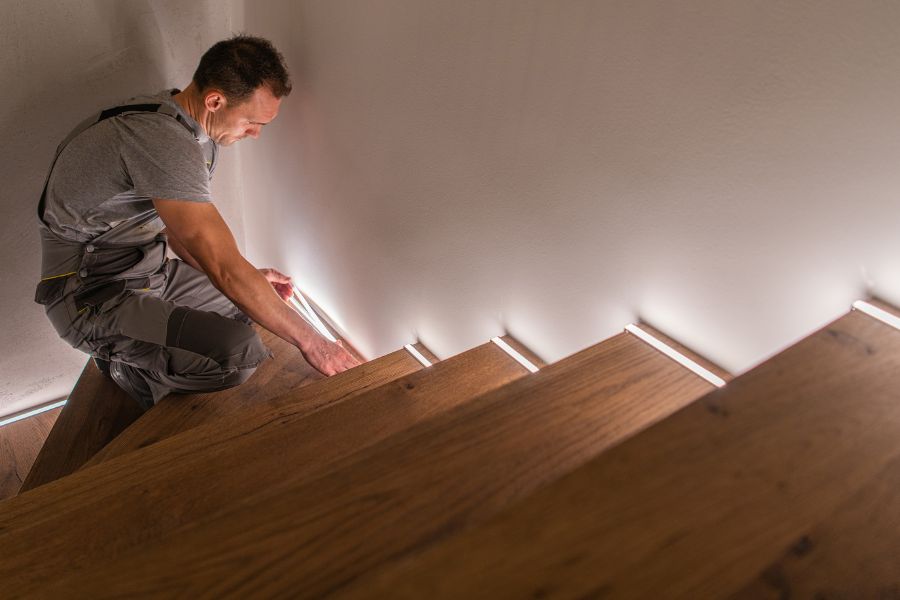
Ensure safety by turning off power, using a voltage tester, and checking weight support. Gather tools: voltage tester, screwdriver set, wire strippers, pliers, ladder. Strip wires, connect them matching colors, secure with connectors and tape, then mount the fixture. Factor in room size, ceiling height, function, décor, and opt for LED fixtures. Troubleshoot by checking wiring, bulb security, power flow, and fuse box. Follow this detailed guide for successful light fixture installation.
Safety Precautions for DIY Light Fixture Installation
When installing light fixtures yourself, ensure you follow essential safety precautions to prevent accidents and ensure proper functionality. Begin by turning off the power to the area where you will be working. This can be done at the circuit breaker or by unscrewing the fuse. Always use a voltage tester to double-check that the power is off before starting any work. Make sure to use the appropriate tools for the job, such as wire cutters/strippers and a screwdriver. Inspect the electrical box to ensure it can support the weight of the new fixture. Secure all wires with wire connectors, ensuring a tight connection. When connecting the wires, match the colors (black to black, white to white, green to green or bare copper). Finally, carefully mount the new fixture following the manufacturer’s instructions, making sure it is securely attached to the electrical box. Remember, safety first when working with electricity.
Tools and Materials Youll Need
To properly install light fixtures, you will need specific tools and materials to ensure a successful and safe installation process. The essential tools include a voltage tester to confirm the power is off, a screwdriver set (flathead and Phillips), wire strippers for removing insulation from wires, needle-nose pliers to bend and shape wires, and a ladder for reaching the installation area. Additionally, having a wire cutter, electrical tape for securing connections, and a hammer for mounting fixtures can be beneficial.
In terms of materials, you will require the new light fixture itself, wire nuts to connect wires securely, a ceiling electrical box to support the fixture, and screws for mounting the fixture. It is also recommended to have a pen and paper handy for jotting down notes or diagrams during the installation process. By ensuring you have these tools and materials ready before starting the installation, you can streamline the process and minimize any potential challenges.
Step-by-Step Guide to Wiring Light Fixtures
Start by ensuring all power to the light fixture is switched off before beginning any wiring work. To wire a light fixture, you will need to follow these steps:
- Prepare the Wires: Strip the insulation off the wires, ensuring about 1/2 inch of bare wire is exposed.
- Connect the Wires: Match the wires from the light fixture to the corresponding wires in the electrical box. Typically, this involves connecting the black (hot) wires, white (neutral) wires, and green or copper (ground) wires together.
- Secure the Connections: Twist wire connectors onto each pair of wires and wrap them with electrical tape for added safety.
- Mount the Fixture: Secure the light fixture to the electrical box using the provided screws.
- Install the Bulbs: Insert the light bulbs into the fixture according to the manufacturer’s instructions.
- Turn on the Power: Once the wiring is complete, restore power to the fixture and test it to ensure it is working correctly.
Tips for Choosing the Right Light Fixture
Choosing the right light fixture requires careful consideration of factors such as room size, ceiling height, and desired lighting effect. Begin by measuring the room’s dimensions to determine the appropriate fixture size. For standard 8-foot ceilings, a flush or semi-flush mount is ideal to prevent the fixture from hanging too low. In rooms with higher ceilings, consider chandeliers or pendant lights for a more dramatic look. Next, think about the function of the lighting – task lighting for focused activities, ambient lighting for overall illumination, or accent lighting to highlight specific areas. Match the style of the fixture to the room’s decor, whether it’s modern, traditional, or industrial. Additionally, pay attention to the fixture’s bulb requirement and wattage to ensure proper brightness. Lastly, don’t forget about energy efficiency – opt for LED fixtures to save on electricity costs and reduce environmental impact. By carefully evaluating these factors, you can select the perfect light fixture to enhance your space.
Troubleshooting Common Light Fixture Installation Issues
When encountering common light fixture installation issues, ensure all wiring connections are secure and free of damage before proceeding with troubleshooting. If the light fixture fails to turn on, start by checking the light bulb to ensure it is securely screwed in and not burnt out. If the bulb is functional, use a voltage tester to check if there is power reaching the fixture. If no power is detected, inspect the circuit breaker or fuse box to see if a tripped breaker or blown fuse is the culprit. Additionally, verify that the light switch is in the “on” position. For flickering or dim lights, confirm that the wattage of the bulb matches the fixture’s rating. In cases of inconsistent power, faulty wiring connections may be the issue; double-check all connections and ensure they are properly secured. If problems persist, consult a professional electrician for further assistance in diagnosing and resolving the issue.







